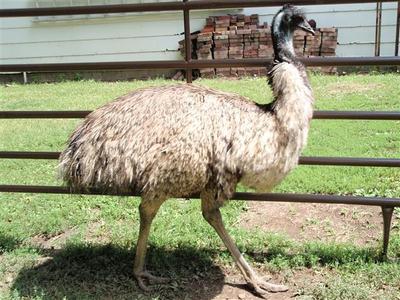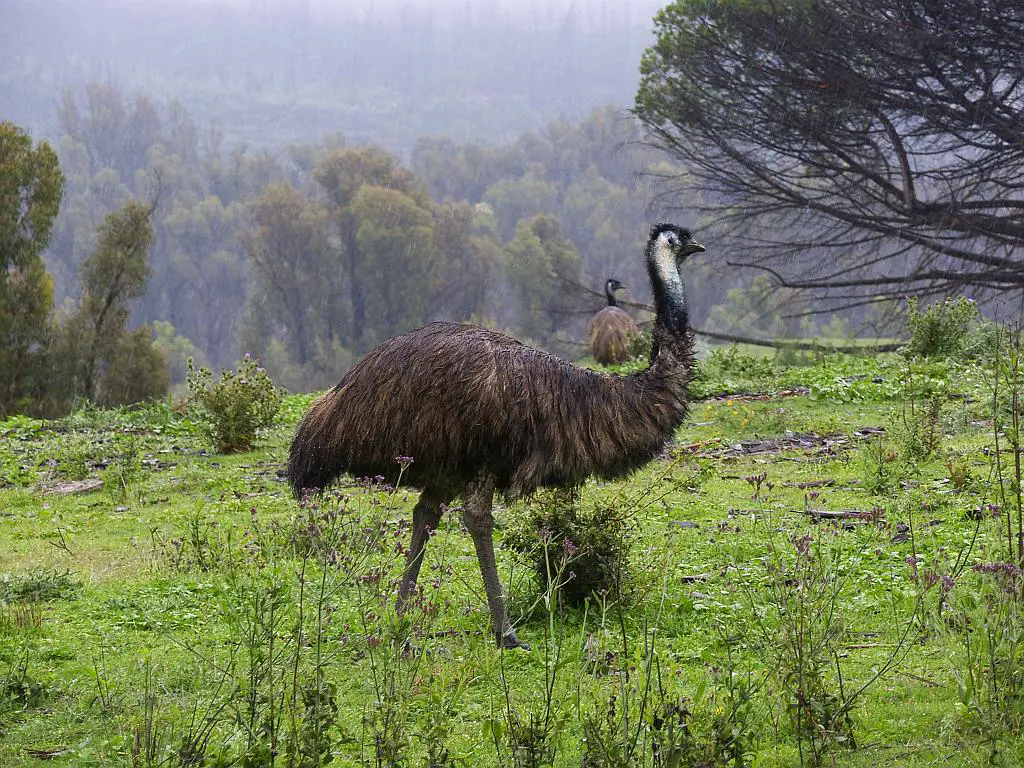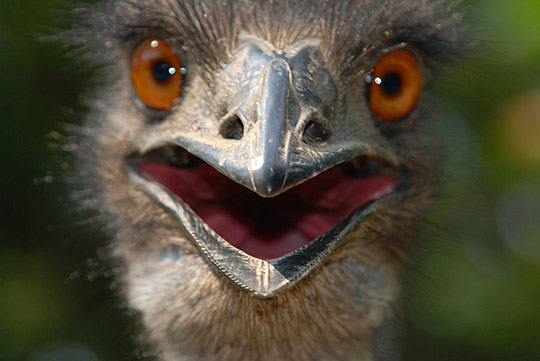Today I am going to share some interesting Emu Bird facts with you. Let me first introduce this amazing flightless bird to you. Emu Bird is known to be the largest bird in Australia. It commonly subsists in the Southern part of the island, Tasmania. It is the lone member of genus Dromaius (a genus of birds of the ratite bird order: cassowaries and emus) and is termed as the second largest bird in existence after ostrich. Emus were first discovered by the European explorers during their transitory visit to the western coast of Australia.
This Tasmanian bird started to become wiped out in the late eighteenth century after the settlement of European in Australia. Human presence proved to be worst ever for emu birds and their subspecies. Unfortunately today emus are not as common as it were hundreds of years back. Emus depict the true cultural emblem of Australia and even few places have been named in Australia after this aboriginal bird. The following Emu Bird facts are really interesting:

Emu Bird Facts
- Unlike any other birds emus are exceptionally capable to assimilate hard materials like stones, glass shards and even metals crumbs since these things assists in the digestive process.
- Similarly the drinking habit of these birds also presents a very unique picture in that they drink only one or two times a day.
- One of the amazing emu bird facts is that emu birds are capable to swim as well as sit in water with no difficulty whatsoever.
- They are very susceptible to other animals or humans for the same reason they sleep infrequently even at nights.
- These vigilant birds have sharp nails which helps them in making a strong defence against the predators.
- Talking about their legs they have certainly very tough legs and they can even break a wire fence with the help of these.
- Their quick eyesight as well as sharp hearing sense makes them even more alert to their enemies.
- One of the best features of emu bird is that they can bear any sort of temperature according to the given circumstances.
- It is too hard to make a distinction between a male and female emu however difference arises when it comes to make loud sounds.
- On the funnier side female emu birds usually fight with one another for their mate.
- Their breeding season is in May and June.
- Female emus are capable of laying eggs in a large number in one season.
- Before the breeding season weight of these emu birds significantly increases; however, male loses considerable amount of weight all through this time.
- Emu bird chicks usually come up with the period of eight weeks and males are responsible for looking after these young ones.
- Emu bird chicks become a full-grown emu only in six months.
- The maximum lifetime of these birds ranges from 10 to 20 years.
Emu Bird
Emu Bird Species
Today we have only three subspecies of emus namely:
a) D. novaehollandiae novaehollandiae (Located in South-East of Australia)
b) D. novaehollandiae woodwardi (Located in North of Australia)
c) D. novaehollandiae rothschildi (Located in South-East of Australia)
Emu Bird Facts About Its Physical Features
Emu is a large bird that can reach up to height of 190 cm that is to say just above 4 feet man. Female emus are relatively greater in size slightly as compared to the males. As against the ostrich (with two toes) emus have three toes with long neck and legs. The size of their wings is around 20 cm (7.9 inch) long with surprisingly a claw at the end of the wing. The working of these wings bears paramount significance while running in that they help them in maintaining a sheer balance while moving. The limb musculature has been designed in such a way as to enable the bird to run expressly. While walking emus are capable to take a step of more than 3 feet however; when it comes to the maximum stride this step increases to around 9.02 feet.
There are no feathers on their legs while the lower part of their legs are thick in order to provide more comfort. The size of their toes and claws is about 15 centimeters (almost 6 inch). The sharp nails and the strong legs help them to run off from any predator. So far as the eyes are concerned they are brown in color and the eyelid moves all through the eye to ensure the complete protection from dust particles. Actually there are nictitating membranes which serve as a shelter to these eyes. The sounds of emu are like grunting and booming with the very high pitch (especially in females) that it can be easily heard even at a distance of 2 km.

Emu Bird Ecology and Behaviour
- Emu birds generally avoid populated and arid areas and are mostly found in the savanna woodland and sclerophyll forests.
- Emus customarily travel in pairs in search of food; owing to this behavior they cannot be easily hunted by their predators.
- Usually in summer emu move towards north while the direction shifts to the south in winter.
- Emus are not accustomed to swimming, though when needed they are the best swimmers.
- Unlike other birds they are not sensitive to humans rather any human limb movement attracts them out of the curiosity.
- Sometimes emu’s behavior becomes hilarious in that they poke other animals and then runaway quickly.
- Emus are not the slumber birds instead they sleep haphazardly all through the night.
- Emus begin to calm down as soon as the sun begins to set down.
- Even in the deep sleep they are very vigilant in that they can easily come out of the sleep and react accordingly. However the maximum duration of deep sleep goes to 20 minutes only.
- On the whole sleeping time of emus constitutes 6-7 hours daily.

Emu Bird Facts related to its Diet
- Just like their behaviour emus diet also encompasses variety of diet plans in that they eat mixture of native plants depending on the seasons.
- Apart from eating plants they intake insects like crickets, grasshoppers, ants and lady birds. Due to this much eating the requirement of proteins is easily fulfilled.
- Amongst these crops and fruits are also accessible to these big birds.
- Of course as said earlier stones and pebbles also play a vital role in the digestive process for they become an indispensable need for emus. They can gulp down some other materials like charcoal, jewellery, nuts etc.
- Emu birds occasionally drink water but when they do so the intake is in larger quantity. However, one of the strange behaviors has been observed scientists are that they usually examine water before drinking. The drinking period last for 10 minutes.
- Generally emus prefer to drink in isolation though they share water with kangaroos and other birds too.
- Since they are more alert compared to other animals they drink water while standing

Leave a Reply